Thank you! Your submission has been received!
Oops! Something went wrong while submitting the form.
Text Link
Berry Blast

127
https://media.aeropage.io/api/docproxy/token/b4c9c7104c2981023a27e3f3456bfd6a/recIoqkg4bWxxOQXj
recIoqkg4bWxxOQXj
34.99
ghost - Graveyard THCP Gummies - 15,000mg- Berry Blast
Text Link
Forbidden Razz

96
https://media.aeropage.io/api/docproxy/token/b4c9c7104c2981023a27e3f3456bfd6a/recNR9CBoNjzhqVD5
recNR9CBoNjzhqVD5
34.99
ghost - Graveyard THCP Gummies - 15,000mg- Forbidden Razz
Text Link
Mystery

109
https://media.aeropage.io/api/docproxy/token/b4c9c7104c2981023a27e3f3456bfd6a/recoIjb56MLWlBiJT
recoIjb56MLWlBiJT
34.99
ghost - Graveyard THCP Gummies - 15,000mg- Mystery
Text Link
Watermelon Lemonade

92
https://media.aeropage.io/api/docproxy/token/b4c9c7104c2981023a27e3f3456bfd6a/recyikCdSOeipHxj0
recyikCdSOeipHxj0
34.99
ghost - Graveyard THCP Gummies - 15,000mg- Watermelon Lemonade
Text Link
Tropical Punch

123
https://media.aeropage.io/api/docproxy/token/b4c9c7104c2981023a27e3f3456bfd6a/recf9djrdROGNREOn
recf9djrdROGNREOn
34.99
ghost - Graveyard THCP Gummies - 15,000mg- Tropical Punch
Text Link
Purple Paradise

38
https://media.aeropage.io/api/docproxy/token/b4c9c7104c2981023a27e3f3456bfd6a/rec93c7BCc5iQMcsF
39.99
rec93c7BCc5iQMcsF
49.99
Delta Extrax - THCa Live Sugar 12000mg Gummies | Adios MF- Purple Paradise
Text Link
Strawberry Delight

78
https://media.aeropage.io/api/docproxy/token/b4c9c7104c2981023a27e3f3456bfd6a/recAXr6cn850lKse5
39.99
recAXr6cn850lKse5
49.99
Delta Extrax - THCa Live Sugar 12000mg Gummies | Adios MF- Strawberry Delight
Text Link

Lemon Cake
1
https://media.aeropage.io/api/docproxy/token/b4c9c7104c2981023a27e3f3456bfd6a/reciFEYb9Zdp2582B
reciFEYb9Zdp2582B
34.99
ghost - All-in-One Slide Piece THCa 7g Disposable Vape Pens-Lemon Cake
Text Link

Grape Ape
0
https://media.aeropage.io/api/docproxy/token/b4c9c7104c2981023a27e3f3456bfd6a/recWvJ8vlVFD67xzc
recWvJ8vlVFD67xzc
34.99
ghost - All-in-One Slide Piece THCa 7g Disposable Vape Pens-Grape Ape
Text Link

Trainwreck
99
https://media.aeropage.io/api/docproxy/token/b4c9c7104c2981023a27e3f3456bfd6a/recVfzDK5p2e5WOYG
recVfzDK5p2e5WOYG
34.99
ghost - All-in-One Slide Piece THCa 7g Disposable Vape Pens-Trainwreck
Text Link

Chem Dog
0
https://media.aeropage.io/api/docproxy/token/b4c9c7104c2981023a27e3f3456bfd6a/recKgKpoqsUj3zMvc
recKgKpoqsUj3zMvc
34.99
ghost - All-in-One Slide Piece THCa 7g Disposable Vape Pens-Chem Dog
Text Link

Blueberry Muffin
0
https://media.aeropage.io/api/docproxy/token/b4c9c7104c2981023a27e3f3456bfd6a/rechxcc47ZCVzFtOm
rechxcc47ZCVzFtOm
34.99
ghost - All-in-One Slide Piece THCa 7g Disposable Vape Pens-Blueberry Muffin
Text Link

Tropicana Cookies
0
https://media.aeropage.io/api/docproxy/token/b4c9c7104c2981023a27e3f3456bfd6a/recx2hXt5rdcNuOrJ
recx2hXt5rdcNuOrJ
34.99
ghost - All-in-One Slide Piece THCa 7g Disposable Vape Pens-Tropicana Cookies
Text Link

Hulk Berry
20
https://media.aeropage.io/api/docproxy/token/b4c9c7104c2981023a27e3f3456bfd6a/recWLu46wPCbloPQC
recWLu46wPCbloPQC
34.99
ghost - All-in-One Slide Piece THCa 7g Disposable Vape Pens-Hulk Berry
Text Link
Raspberry Lemonade

21
https://airtable.com/appWUsGD3byrYcN3l/tblEtb1aIH5Xk4Nh9/viwx3HbRc2OBn02xl/rec9WLlZ8q5wcEfPp/fld2GYgNi5VwfLA0b/attER72Nk8fDacclj
39.99
rec9WLlZ8q5wcEfPp
49.99
Delta Extrax - THCa Live Sugar 12000mg Gummies | Adios MF- Raspberry Lemonade
Text Link
Peach Rings

0
https://airtable.com/appWUsGD3byrYcN3l/tblEtb1aIH5Xk4Nh9/viwx3HbRc2OBn02xl/recakNGjXtbtekSMd/fld2GYgNi5VwfLA0b/atteVU7CWQbEixUwy
39.99
recakNGjXtbtekSMd
49.99
Delta Extrax - THCa Live Sugar 12000mg Gummies | Adios MF- Peach Rings
Text Link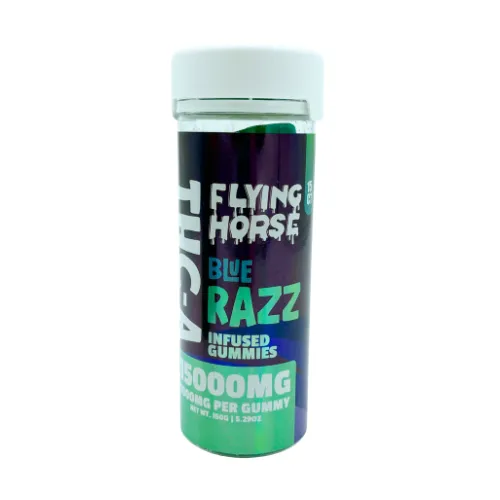
Blue Razz

17
https://airtable.com/appWUsGD3byrYcN3l/tblEtb1aIH5Xk4Nh9/viwx3HbRc2OBn02xl/recJi9CDLeliZleKr/fld2GYgNi5VwfLA0b/attvMIUMZWz2Ngpcw
recJi9CDLeliZleKr
34.99
Flying Horse - Exotic Blend Gummies - 15000mg - 15ct- Blue Razz
Text Link
Mango Pineapple

34
https://airtable.com/appWUsGD3byrYcN3l/tblEtb1aIH5Xk4Nh9/viwx3HbRc2OBn02xl/rec6fW3lvAAAtMUtr/fld2GYgNi5VwfLA0b/attvMIUMZWz2Ngpcw
rec6fW3lvAAAtMUtr
34.99
Flying Horse - Exotic Blend Gummies - 15000mg - 15ct- Mango Pineapple
Text Link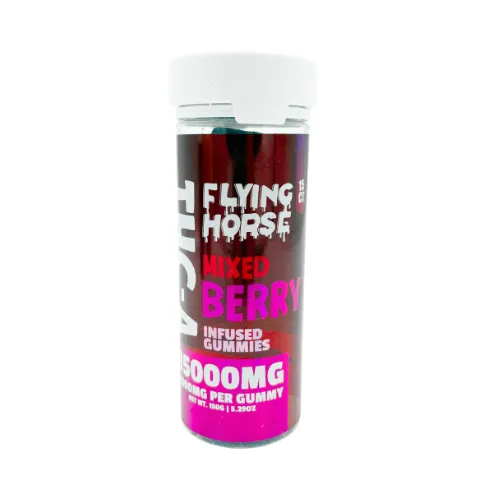
Mixed Berry

18
https://airtable.com/appWUsGD3byrYcN3l/tblEtb1aIH5Xk4Nh9/viwx3HbRc2OBn02xl/reckqH4HtS6Bi3Fqc/fld2GYgNi5VwfLA0b/attvMIUMZWz2Ngpcw
reckqH4HtS6Bi3Fqc
34.99
Flying Horse - Exotic Blend Gummies - 15000mg - 15ct- Mixed Berry
Text Link
Blueberry Blast

24
https://airtable.com/appWUsGD3byrYcN3l/tblEtb1aIH5Xk4Nh9/viwx3HbRc2OBn02xl/recKHLStgO3GQYGw1/fld2GYgNi5VwfLA0b/attvMIUMZWz2Ngpcw
recKHLStgO3GQYGw1
34.99
Flying Horse - Exotic Blend Gummies - 15000mg - 15ct- Blueberry Blast
Text Link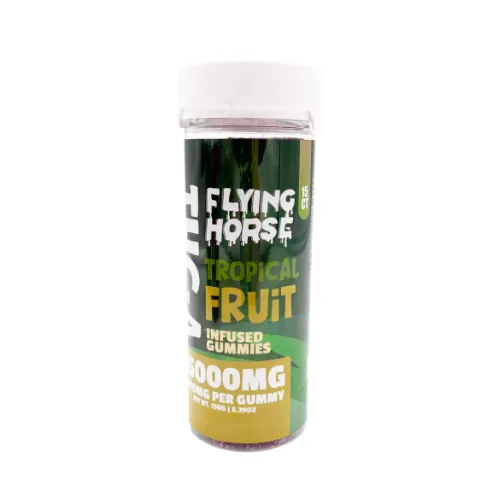
Tropical Fruit

49
https://airtable.com/appWUsGD3byrYcN3l/tblEtb1aIH5Xk4Nh9/viwx3HbRc2OBn02xl/rec6z5o0QKdKV0Nsw/fld2GYgNi5VwfLA0b/attvMIUMZWz2Ngpcw
rec6z5o0QKdKV0Nsw
34.99
Flying Horse - Exotic Blend Gummies - 15000mg - 15ct- Tropical Fruit
Text Link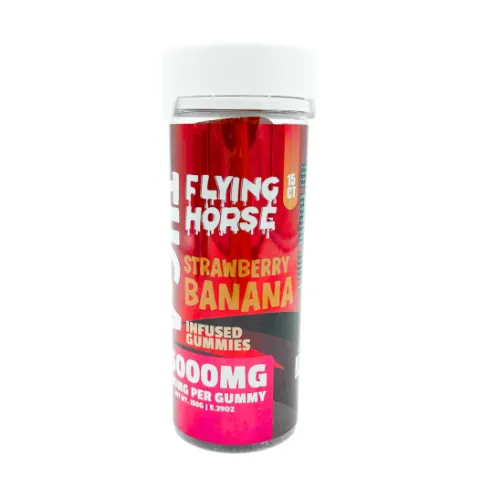
Strawberry Banana

4
https://airtable.com/appWUsGD3byrYcN3l/tblEtb1aIH5Xk4Nh9/viwx3HbRc2OBn02xl/recmqtTi9Dd0fWuLS/fld2GYgNi5VwfLA0b/attvMIUMZWz2Ngpcw
recmqtTi9Dd0fWuLS
34.99
Flying Horse - Exotic Blend Gummies - 15000mg - 15ct- Strawberry Banana
Text Link

White Ghost
0
https://media.aeropage.io/api/docproxy/token/b4c9c7104c2981023a27e3f3456bfd6a/recnOO9VgffnEAgIF
recnOO9VgffnEAgIF
24.99
Kush Burst - Super Knockout Blend Vape Pens - 2.2g-White Ghost
Text Link

Pink Candy Kush
0
https://media.aeropage.io/api/docproxy/token/b4c9c7104c2981023a27e3f3456bfd6a/recLsDdWSrOCv9J3D
recLsDdWSrOCv9J3D
24.99
Kush Burst - Super Knockout Blend Vape Pens - 2.2g-Pink Candy Kush
Text Link

Animal Cookies
32
https://media.aeropage.io/api/docproxy/token/b4c9c7104c2981023a27e3f3456bfd6a/rec5q6Y4g92ex7mR7
rec5q6Y4g92ex7mR7
24.99
Kush Burst - Super Knockout Blend Vape Pens - 2.2g-Animal Cookies
Text Link

Blue Fire
0
https://media.aeropage.io/api/docproxy/token/b4c9c7104c2981023a27e3f3456bfd6a/reccKe22oQff7NUpC
reccKe22oQff7NUpC
24.99
Kush Burst - Super Knockout Blend Vape Pens - 2.2g-Blue Fire
Text Link

Lemon Zkittles
14
https://media.aeropage.io/api/docproxy/token/b4c9c7104c2981023a27e3f3456bfd6a/recQHowW2gjHQzx2M
recQHowW2gjHQzx2M
24.99
Kush Burst - Super Knockout Blend Vape Pens - 2.2g-Lemon Zkittles
Text Link

Space Octane
47
https://media.aeropage.io/api/docproxy/token/b4c9c7104c2981023a27e3f3456bfd6a/recBvPvi4r2oPkIjF
recBvPvi4r2oPkIjF
24.99
Kush Burst - Super Knockout Blend Vape Pens - 2.2g-Space Octane
Text Link
Chocolate Milk

11
https://media.aeropage.io/api/docproxy/token/b4c9c7104c2981023a27e3f3456bfd6a/recIOaKOWXFLcbyJz
recIOaKOWXFLcbyJz
29.99
TRĒ House - Mushroom Microdose Chocolate Bar- Chocolate Milk
Text Link
Fruity Cereal

17
https://media.aeropage.io/api/docproxy/token/b4c9c7104c2981023a27e3f3456bfd6a/rec9vpH4yV8DkRgHp
rec9vpH4yV8DkRgHp
29.99
TRĒ House - Mushroom Microdose Chocolate Bar- Fruity Cereal
Text Link
Cookies & Cream

6
https://media.aeropage.io/api/docproxy/token/b4c9c7104c2981023a27e3f3456bfd6a/rec0qc4rtLss5lQps
rec0qc4rtLss5lQps
29.99
TRĒ House - Mushroom Microdose Chocolate Bar- Cookies & Cream
Text Link
Blue Raspberry

5
https://media.aeropage.io/api/docproxy/token/b4c9c7104c2981023a27e3f3456bfd6a/recFOPG05oAdo6V6U
recFOPG05oAdo6V6U
29.99
TRĒ House - Mushroom Gummies- Blue Raspberry
Text Link
Juicy Mango

61
https://media.aeropage.io/api/docproxy/token/b4c9c7104c2981023a27e3f3456bfd6a/rec3nXgsSkfT9LveN
rec3nXgsSkfT9LveN
29.99
TRĒ House - Mushroom Gummies- Juicy Mango
Text Link
Strawberry Dream

13
https://media.aeropage.io/api/docproxy/token/b4c9c7104c2981023a27e3f3456bfd6a/recBE89xaD1sfgkGy
recBE89xaD1sfgkGy
29.99
TRĒ House - Mushroom Gummies- Strawberry Dream
Text Link
Watermelon Wonder

52
https://media.aeropage.io/api/docproxy/token/b4c9c7104c2981023a27e3f3456bfd6a/recrJ0zwT0xKEAeYz
recrJ0zwT0xKEAeYz
29.99
TRĒ House - Mushroom Gummies- Watermelon Wonder
Text Link
Sour Tropical

27
https://airtable.com/appWUsGD3byrYcN3l/tblEtb1aIH5Xk4Nh9/viwx3HbRc2OBn02xl/recUXj3syyuGfRehx/fld2GYgNi5VwfLA0b/attwfLcovBFqGMxNw
recUXj3syyuGfRehx
29.99
TRĒ House - Mushroom Gummies- Sour Tropical
Text Link
Peanut Butter

32
https://media.aeropage.io/api/docproxy/token/b4c9c7104c2981023a27e3f3456bfd6a/recLmIXyhJSijdFKg
recLmIXyhJSijdFKg
29.99
TRĒ House - Mushroom Microdose Chocolate Bar- Peanut Butter
Text Link
Sour Cherry

36
https://airtable.com/appWUsGD3byrYcN3l/tblEtb1aIH5Xk4Nh9/viwx3HbRc2OBn02xl/recLmxAbo4t5kpPvs/fld2GYgNi5VwfLA0b/attOJZGTDAaAbZEPM
recLmxAbo4t5kpPvs
29.99
TRĒ House - Mushroom Gummies- Sour Cherry
Text Link

Melon Runtz | 3.5g
20
https://airtable.com/appWUsGD3byrYcN3l/tblEtb1aIH5Xk4Nh9/viwx3HbRc2OBn02xl/recAjLLWDRHvZTrrL/fld2GYgNi5VwfLA0b/att2dthUBMC7yhZqY
recAjLLWDRHvZTrrL
39.99
Top Shelf Hemp Co - THCA Flower-Melon Runtz | 3.5g
Text Link

Heavy OG | 3.5g
0
https://airtable.com/appWUsGD3byrYcN3l/tblEtb1aIH5Xk4Nh9/viwx3HbRc2OBn02xl/rechs931YLcKZn7ic/fld2GYgNi5VwfLA0b/att2dthUBMC7yhZqY
rechs931YLcKZn7ic
39.99
Top Shelf Hemp Co - THCA Flower-Heavy OG | 3.5g
Text Link

Berry Cake | 3.5g
69
https://airtable.com/appWUsGD3byrYcN3l/tblEtb1aIH5Xk4Nh9/viwx3HbRc2OBn02xl/recegCM7b6uyIlq9O/fld2GYgNi5VwfLA0b/att2dthUBMC7yhZqY
recegCM7b6uyIlq9O
39.99
Top Shelf Hemp Co - THCA Flower-Berry Cake | 3.5g
Text Link

Berry Cake | 7g
3
https://airtable.com/appWUsGD3byrYcN3l/tblEtb1aIH5Xk4Nh9/recIQhSzcDlpAZqeU/fld2GYgNi5VwfLA0b/att2dthUBMC7yhZqY
recIQhSzcDlpAZqeU
59.99
Top Shelf Hemp Co - THCA Flower-Berry Cake | 7g
Text Link

Berry Cake | 28g (1oz)
0
https://airtable.com/appWUsGD3byrYcN3l/tblEtb1aIH5Xk4Nh9/reclPtY5WiumJsAM8/fld2GYgNi5VwfLA0b/att2dthUBMC7yhZqY
reclPtY5WiumJsAM8
199.99
Top Shelf Hemp Co - THCA Flower-Berry Cake | 28g (1oz)
Text Link
Chocolate Crunch

8
https://airtable.com/appWUsGD3byrYcN3l/tblEtb1aIH5Xk4Nh9/viwx3HbRc2OBn02xl/recvy2pJRgLPqY1b8/fld2GYgNi5VwfLA0b/att52hVuiOlunaBtF
recvy2pJRgLPqY1b8
29.99
TRĒ House - Mushroom Microdose Chocolate Bar- Chocolate Crunch
Text Link

Tropical Summer | 28g (1oz)
0
https://airtable.com/appWUsGD3byrYcN3l/tblEtb1aIH5Xk4Nh9/viwx3HbRc2OBn02xl/rec8BuY5mazMWgYqh/fld2GYgNi5VwfLA0b/attWffHX8pBvZnbUs
rec8BuY5mazMWgYqh
199.99
Top Shelf Hemp Co - THCA Flower-Tropical Summer | 28g (1oz)
Text Link

Blueberry Punch | 3.5g
28
https://airtable.com/appWUsGD3byrYcN3l/tblEtb1aIH5Xk4Nh9/viwx3HbRc2OBn02xl/recY7HM55wwqIqlF7/fld2GYgNi5VwfLA0b/attUbd7ZZuBYKUrAg
recY7HM55wwqIqlF7
39.99
Top Shelf Hemp Co - THCA Flower-Blueberry Punch | 3.5g
Text Link

Tropical Summer | 3.5g
78
https://airtable.com/appWUsGD3byrYcN3l/tblEtb1aIH5Xk4Nh9/viwx3HbRc2OBn02xl/recTfBX6BDvWXAhP8/fld2GYgNi5VwfLA0b/attwvZpkC5WPt6wfk
recTfBX6BDvWXAhP8
39.99
Top Shelf Hemp Co - THCA Flower-Tropical Summer | 3.5g
Text Link

Tropical Summer | 7g
0
https://airtable.com/appWUsGD3byrYcN3l/tblEtb1aIH5Xk4Nh9/viwx3HbRc2OBn02xl/recE5BWJCZaxmC4hE/fld2GYgNi5VwfLA0b/attQJeG1erdv4LZLo
recE5BWJCZaxmC4hE
59.99
Top Shelf Hemp Co - THCA Flower-Tropical Summer | 7g
Text Link

White Rainbow (Sativa)
0
https://airtable.com/appWUsGD3byrYcN3l/tblEtb1aIH5Xk4Nh9/viwx3HbRc2OBn02xl/recJ3dGPnb0XdBzRu/fld2GYgNi5VwfLA0b/attgP0Wessj4rPh54
recJ3dGPnb0XdBzRu
9.99
Top Shelf Hemp Co - ZaZa Duo's | 1.5g THCa Hemp Pre Rolls-White Rainbow (Sativa)
Text Link

Jet Fuel (Indica)
0
https://airtable.com/appWUsGD3byrYcN3l/tblEtb1aIH5Xk4Nh9/viwx3HbRc2OBn02xl/recf2IxmUtyJfYHzx/fld2GYgNi5VwfLA0b/attLawKCypXftRgHf
recf2IxmUtyJfYHzx
9.99
Top Shelf Hemp Co - ZaZa Duo's | 1.5g THCa Hemp Pre Rolls-Jet Fuel (Indica)
Text Link

Black Runtz
1
https://airtable.com/appWUsGD3byrYcN3l/tblEtb1aIH5Xk4Nh9/viwx3HbRc2OBn02xl/recCVX0p7OS15hukS/fld2GYgNi5VwfLA0b/attQAID23piREmtEC
recCVX0p7OS15hukS
13.99
Black Roses - Hash Hole Pre Rolls | 2ct - 4g-Black Runtz
Text Link

Tropicana Cherry
37
https://airtable.com/appWUsGD3byrYcN3l/tblEtb1aIH5Xk4Nh9/viwx3HbRc2OBn02xl/recyj453nmMm8pQQk/fld2GYgNi5VwfLA0b/attEzGuemqaGWTpfr
recyj453nmMm8pQQk
13.99
Black Roses - Hash Hole Pre Rolls | 2ct - 4g-Tropicana Cherry
Text Link

Blue Razz
1
https://airtable.com/appWUsGD3byrYcN3l/tblEtb1aIH5Xk4Nh9/viwx3HbRc2OBn02xl/recL4J2idNXbyKgBl/fld2GYgNi5VwfLA0b/attg6s9llUlwWusFq
recL4J2idNXbyKgBl
13.99
Black Roses - Hash Hole Pre Rolls | 2ct - 4g-Blue Razz
Text Link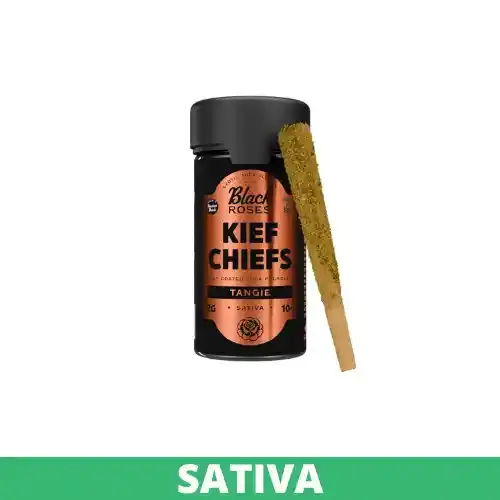

Tangie
15
https://airtable.com/appWUsGD3byrYcN3l/tblEtb1aIH5Xk4Nh9/viwx3HbRc2OBn02xl/recisfa4d8LteZmJ0/fld2GYgNi5VwfLA0b/attUPJtuze28CCG9a
recisfa4d8LteZmJ0
49.99
Black Roses - Kief Chiefs Coated THCa Pre Rolls | 10ct - 20g-Tangie
Text Link

Pink Runtz
2
https://airtable.com/appWUsGD3byrYcN3l/tblEtb1aIH5Xk4Nh9/viwx3HbRc2OBn02xl/recRb9wmHJ39hj1Sm/fld2GYgNi5VwfLA0b/attyNe4rVQYllQxIm
recRb9wmHJ39hj1Sm
49.99
Black Roses - Kief Chiefs Coated THCa Pre Rolls | 10ct - 20g-Pink Runtz
Text Link

Gorilla Glue
45
https://airtable.com/appWUsGD3byrYcN3l/tblEtb1aIH5Xk4Nh9/viwx3HbRc2OBn02xl/receEflJgCvIIZMvV/fld2GYgNi5VwfLA0b/attBNSxZoZx24nTc1
receEflJgCvIIZMvV
49.99
Black Roses - Kief Chiefs Coated THCa Pre Rolls | 10ct - 20g-Gorilla Glue
Text Link

LA Confidential
29
https://airtable.com/appWUsGD3byrYcN3l/tblEtb1aIH5Xk4Nh9/viwx3HbRc2OBn02xl/rec6CpQLU2dH0DUf3/fld2GYgNi5VwfLA0b/attSV0J5ujWCMfuFT
rec6CpQLU2dH0DUf3
49.99
Black Roses - Kief Chiefs Coated THCa Pre Rolls | 10ct - 20g-LA Confidential
Text Link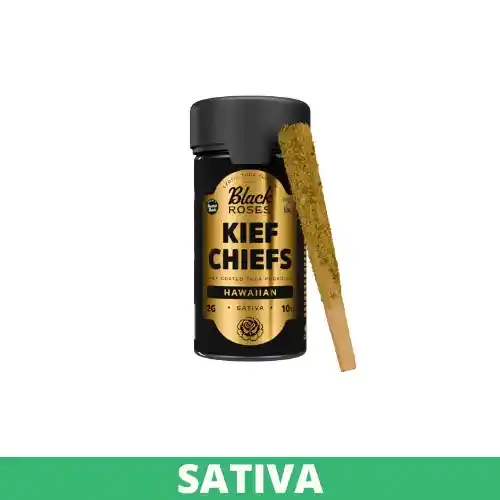

Hawaiian
16
https://airtable.com/appWUsGD3byrYcN3l/tblEtb1aIH5Xk4Nh9/viwx3HbRc2OBn02xl/recLFZeF0KUDd0ivd/fld2GYgNi5VwfLA0b/att1MfMOWBJIFbPyJ
recLFZeF0KUDd0ivd
49.99
Black Roses - Kief Chiefs Coated THCa Pre Rolls | 10ct - 20g-Hawaiian
Text Link

Cherry Pie
11
https://airtable.com/appWUsGD3byrYcN3l/tblEtb1aIH5Xk4Nh9/viwx3HbRc2OBn02xl/recDOjm2VCBiTDRBv/fld2GYgNi5VwfLA0b/attMN3Mu67c0UjOWl
recDOjm2VCBiTDRBv
49.99
Black Roses - Kief Chiefs Coated THCa Pre Rolls | 10ct - 20g-Cherry Pie
Text Link.webp)
Blue Razz
.webp)
394
recr3SzKOkQzXvtdf
19.99
Mind Melt - Neurosporic Mushroom Tablets - 5000mg- Blue Razz
Text Link
Kiwi Acai

371
recqOQQucPdM6BGab
19.99
Mind Melt - Neurosporic Mushroom Tablets - 5000mg- Kiwi Acai
Text Link
Mango Sunrise

378
recwZDhNEZa0qU7ME
19.99
Mind Melt - Neurosporic Mushroom Tablets - 5000mg- Mango Sunrise
Text Link

Backwoods Diesel + Delta Blues
34
https://airtable.com/appWUsGD3byrYcN3l/tblEtb1aIH5Xk4Nh9/viwx3HbRc2OBn02xl/rec9DdGl5xKtAmdv0/fld2GYgNi5VwfLA0b/att6VoySwvPOBslgY
rec9DdGl5xKtAmdv0
44.99
Flying Horse - Wild n Black 3-in-1 Vape - 9g-Backwoods Diesel + Delta Blues
Text Link

Track Burner + Candy Heat
23
https://airtable.com/appWUsGD3byrYcN3l/tblEtb1aIH5Xk4Nh9/viwx3HbRc2OBn02xl/recOyScH7Kk4uwawT/fld2GYgNi5VwfLA0b/att6VoySwvPOBslgY
recOyScH7Kk4uwawT
44.99
Flying Horse - Wild n Black 3-in-1 Vape - 9g-Track Burner + Candy Heat
Text Link

Grape Gas + Heat OG
15
https://airtable.com/appWUsGD3byrYcN3l/tblEtb1aIH5Xk4Nh9/viwx3HbRc2OBn02xl/recofPlxd0fZ8s9Fr/fld2GYgNi5VwfLA0b/att6VoySwvPOBslgY
recofPlxd0fZ8s9Fr
44.99
Flying Horse - Wild n Black 3-in-1 Vape - 9g-Grape Gas + Heat OG
Text Link

Dust Bowl + Patch Berry
18
https://airtable.com/appWUsGD3byrYcN3l/tblEtb1aIH5Xk4Nh9/viwx3HbRc2OBn02xl/recLN19qaoiQhS55T/fld2GYgNi5VwfLA0b/att6VoySwvPOBslgY
recLN19qaoiQhS55T
44.99
Flying Horse - Wild n Black 3-in-1 Vape - 9g-Dust Bowl + Patch Berry
Text Link

Breeze Escape + Ravens Blood
8
https://airtable.com/appWUsGD3byrYcN3l/tblEtb1aIH5Xk4Nh9/viwx3HbRc2OBn02xl/rec3oP1tIqGmZo02B/fld2GYgNi5VwfLA0b/att6VoySwvPOBslgY
rec3oP1tIqGmZo02B
44.99
Flying Horse - Wild n Black 3-in-1 Vape - 9g-Breeze Escape + Ravens Blood
Text Link

Island Blast + Ice Cream Slap
24
https://airtable.com/appWUsGD3byrYcN3l/tblEtb1aIH5Xk4Nh9/viwx3HbRc2OBn02xl/recLTsSeoMZCcGiQT/fld2GYgNi5VwfLA0b/att6VoySwvPOBslgY
recLTsSeoMZCcGiQT
44.99
Flying Horse - Wild n Black 3-in-1 Vape - 9g-Island Blast + Ice Cream Slap
Text Link

Pineapple Breeze | 3.5g
39
https://airtable.com/appWUsGD3byrYcN3l/tblEtb1aIH5Xk4Nh9/viwx3HbRc2OBn02xl/recKHAptBBsCif59I/fld2GYgNi5VwfLA0b/attVKPmXeKmgZRLYQ
recKHAptBBsCif59I
39.99
Top Shelf Hemp Co - THCA Flower-Pineapple Breeze | 3.5g
Text Link

Pineapple Breeze | 7g
0
https://airtable.com/appWUsGD3byrYcN3l/tblEtb1aIH5Xk4Nh9/viwx3HbRc2OBn02xl/recYXW2rxONyCYSEt/fld2GYgNi5VwfLA0b/attHjuo4x2grnMwic
recYXW2rxONyCYSEt
59.99
Top Shelf Hemp Co - THCA Flower-Pineapple Breeze | 7g
Text Link

Pineapple Breeze | 28g (1oz)
0
https://airtable.com/appWUsGD3byrYcN3l/tblEtb1aIH5Xk4Nh9/viwx3HbRc2OBn02xl/recpSMlJev6x6wuLc/fld2GYgNi5VwfLA0b/atthxBex0AuNymotq
recpSMlJev6x6wuLc
199.99
Top Shelf Hemp Co - THCA Flower-Pineapple Breeze | 28g (1oz)
Text Link
Strawberry Daydream

94
recbjJicxBm5tHFJE
9.99
Delta Extrax - BrainRot Gummies - THCA + D9 + THCP - 2000mg- Strawberry Daydream
Text Link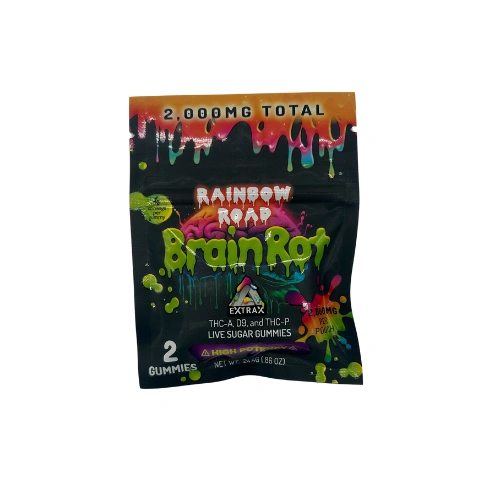
Rainbow Road

76
recqe8utWwwDLjXdi
9.99
Delta Extrax - BrainRot Gummies - THCA + D9 + THCP - 2000mg- Rainbow Road
Text Link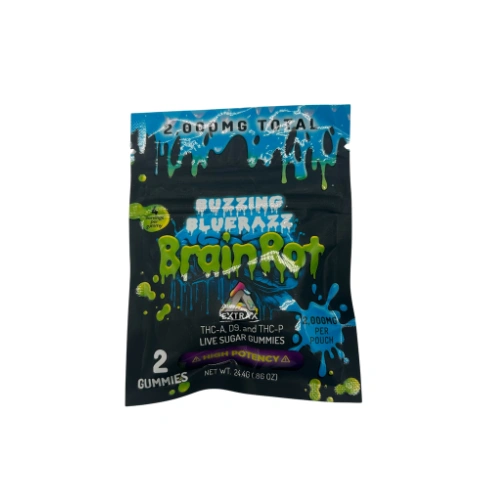
Buzzing Blue Razz

92
rectjMs9JSxtOPa8X
9.99
Delta Extrax - BrainRot Gummies - THCA + D9 + THCP - 2000mg- Buzzing Blue Razz
Text Link

Ice Cream Cake | 3.5g
15
recHfwNKRscK4oHtD
39.99
Top Shelf Hemp Co - THCA Flower-Ice Cream Cake | 3.5g
Text Link
Blackberry Acai

0
https://media.aeropage.io/api/docproxy/token/b4c9c7104c2981023a27e3f3456bfd6a/recbMm6xiwWgpqDyp
29.99
recbMm6xiwWgpqDyp
39.99
Delta Extrax - THCh | THCjd Lights Out Gummies - 3500mg - Blackberry Acai
Text Link
Kiwi Watermelon

0
https://media.aeropage.io/api/docproxy/token/b4c9c7104c2981023a27e3f3456bfd6a/rec0IYgNsZKT85GGh
29.99
rec0IYgNsZKT85GGh
39.99
Delta Extrax - THCh | THCjd Lights Out Gummies - 3500mg - Kiwi Watermelon
Text Link
Purple Berry

0
https://media.aeropage.io/api/docproxy/token/b4c9c7104c2981023a27e3f3456bfd6a/recz3ddcPiY33D16R
29.99
recz3ddcPiY33D16R
39.99
Delta Extrax - THCh | THCjd Lights Out Gummies - 3500mg - Purple Berry
Text Link
Strawberry Gelato

5
https://airtable.com/appWUsGD3byrYcN3l/tblEtb1aIH5Xk4Nh9/viwx3HbRc2OBn02xl/recXM4TI1htWh3o3J/fld2GYgNi5VwfLA0b/attUt1BX3z8xnpt6c
recXM4TI1htWh3o3J
15.99
Cutleaf - Mushroom Gummies - Sunrise - 1000mg- Strawberry Gelato
Text Link
Mango Gelato

54
https://airtable.com/appWUsGD3byrYcN3l/tblEtb1aIH5Xk4Nh9/viwx3HbRc2OBn02xl/recgxWTjSVWCiJhHa/fld2GYgNi5VwfLA0b/attHKWKmYTnMLf9wT
recgxWTjSVWCiJhHa
15.99
Cutleaf - Mushroom Gummies - Sunrise - 1000mg- Mango Gelato
Text Link
Watermelon Gelato

41
https://airtable.com/appWUsGD3byrYcN3l/tblEtb1aIH5Xk4Nh9/viwx3HbRc2OBn02xl/recGiUsz9lw2USwGr/fld2GYgNi5VwfLA0b/attsN5Hqxjw9MPO9P
recGiUsz9lw2USwGr
15.99
Cutleaf - Mushroom Gummies - Sunrise - 1000mg- Watermelon Gelato
Text Link
Lemon Lime | 300mg

25
https://media.aeropage.io/api/docproxy/token/b4c9c7104c2981023a27e3f3456bfd6a/recQsB4JHSKUqUFhQ
recQsB4JHSKUqUFhQ
34.99
Cannabis Life - Extra Strength Delta 9 Gummies- Lemon Lime | 300mg
Text Link-100MG.png)
Lemon Lime | 100mg
-100MG.png)
24
https://media.aeropage.io/api/docproxy/token/b4c9c7104c2981023a27e3f3456bfd6a/recqdCvLijMcCmHFE
recqdCvLijMcCmHFE
19.99
Cannabis Life - Extra Strength Delta 9 Gummies- Lemon Lime | 100mg
Text Link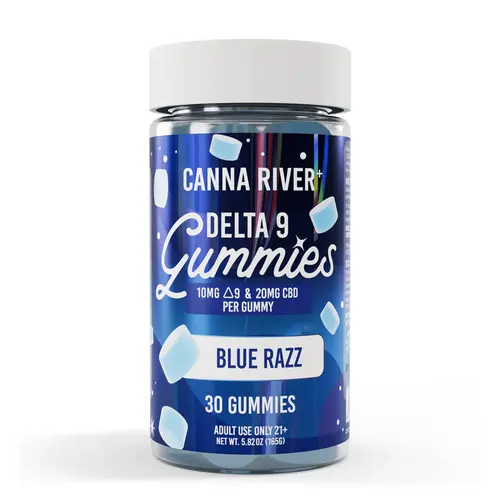
Blue Raspberry

15
https://media.aeropage.io/api/docproxy/token/b4c9c7104c2981023a27e3f3456bfd6a/recU7Oh41V070xZ16
recU7Oh41V070xZ16
29.99
Canna River - Delta 9 Gummies - 300mg- Blue Raspberry
Text Link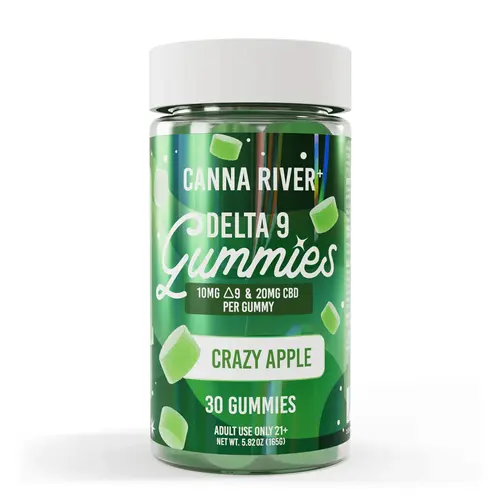
Crazy Apple

3
https://media.aeropage.io/api/docproxy/token/b4c9c7104c2981023a27e3f3456bfd6a/reccKVMRWnvRXrDXV
reccKVMRWnvRXrDXV
29.99
Canna River - Delta 9 Gummies - 300mg- Crazy Apple
Text Link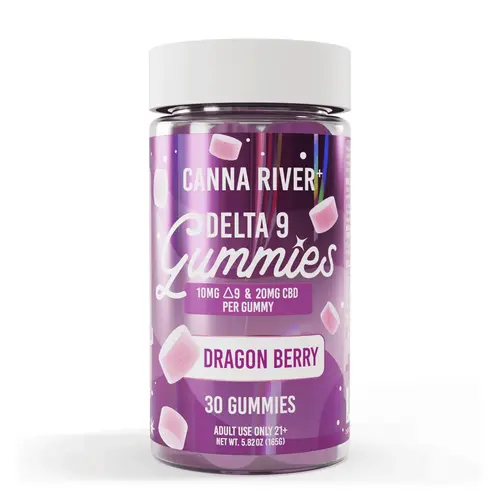
Dragon Berry

15
https://media.aeropage.io/api/docproxy/token/b4c9c7104c2981023a27e3f3456bfd6a/recJBAarCkQAcBlrT
recJBAarCkQAcBlrT
29.99
Canna River - Delta 9 Gummies - 300mg- Dragon Berry
Text Link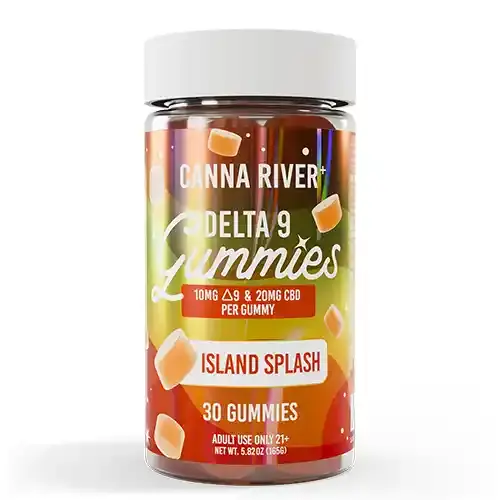
Island Splash

13
https://media.aeropage.io/api/docproxy/token/b4c9c7104c2981023a27e3f3456bfd6a/recthk9QsoJE3prCB
recthk9QsoJE3prCB
29.99
Canna River - Delta 9 Gummies - 300mg- Island Splash
Text Link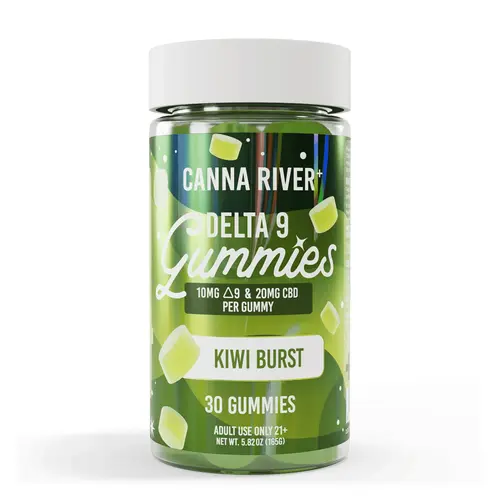
Kiwi Burst

3
https://media.aeropage.io/api/docproxy/token/b4c9c7104c2981023a27e3f3456bfd6a/recAIC5ZXTCZ1VrMR
recAIC5ZXTCZ1VrMR
29.99
Canna River - Delta 9 Gummies - 300mg- Kiwi Burst
Text Link
Lemon Raspberry

15
https://media.aeropage.io/api/docproxy/token/b4c9c7104c2981023a27e3f3456bfd6a/recvHc7YjOeKYbqD5
recvHc7YjOeKYbqD5
29.99
Canna River - Delta 9 Gummies - 300mg- Lemon Raspberry
Text Link.webp)
Major Melonz
.webp)
0
https://media.aeropage.io/api/docproxy/token/b4c9c7104c2981023a27e3f3456bfd6a/rec3usEkTl0Q9INk6
rec3usEkTl0Q9INk6
29.99
Canna River - Delta 9 Gummies - 300mg- Major Melonz
Text Link

Jet Fuel
0
https://media.aeropage.io/api/docproxy/token/b4c9c7104c2981023a27e3f3456bfd6a/recYWUo8RFF8onnD4
recYWUo8RFF8onnD4
44.99
Dome Wrecker - THCa | THC-P Disposable Vape Pen - 5g-Jet Fuel
Text Link

Amnesia Haze
35
https://media.aeropage.io/api/docproxy/token/b4c9c7104c2981023a27e3f3456bfd6a/recr8pfUbtlW4hgQU
recr8pfUbtlW4hgQU
44.99
Dome Wrecker - THCa | THC-P Disposable Vape Pen - 5g-Amnesia Haze
Text Link

Hulkberry Ice
46
https://media.aeropage.io/api/docproxy/token/b4c9c7104c2981023a27e3f3456bfd6a/recV7Y7uO0tLTvkjJ
recV7Y7uO0tLTvkjJ
44.99
Dome Wrecker - THCa | THC-P Disposable Vape Pen - 5g-Hulkberry Ice
Text Link

Watermelon Runts Ice
56
https://media.aeropage.io/api/docproxy/token/b4c9c7104c2981023a27e3f3456bfd6a/recn3ZcqZPXfddkAY
recn3ZcqZPXfddkAY
44.99
Dome Wrecker - THCa | THC-P Disposable Vape Pen - 5g-Watermelon Runts Ice
Text Link

Illuminati OG
0
https://media.aeropage.io/api/docproxy/token/b4c9c7104c2981023a27e3f3456bfd6a/rec4qZKPEeOvonLuI
rec4qZKPEeOvonLuI
44.99
Dome Wrecker - THCa | THC-P Disposable Vape Pen - 5g-Illuminati OG
Text Link

Bubblegum OG Ice
49
https://media.aeropage.io/api/docproxy/token/b4c9c7104c2981023a27e3f3456bfd6a/recK8046FoqlF8ajN
recK8046FoqlF8ajN
44.99
Dome Wrecker - THCa | THC-P Disposable Vape Pen - 5g-Bubblegum OG Ice
Text Link

Multi Melonaire
36
https://media.aeropage.io/api/docproxy/token/b4c9c7104c2981023a27e3f3456bfd6a/recDeeVJ5NiPQiEGi
recDeeVJ5NiPQiEGi
39.99
Pushin P's THCP Vape Cartridge | 1000mg-Multi Melonaire
Text Link

P.B. Breath
16
https://media.aeropage.io/api/docproxy/token/b4c9c7104c2981023a27e3f3456bfd6a/rectsmw3tlMctdQPl
rectsmw3tlMctdQPl
39.99
Pushin P's THCP Vape Cartridge | 1000mg-P.B. Breath
Text Link

Blew Berry
19
https://media.aeropage.io/api/docproxy/token/b4c9c7104c2981023a27e3f3456bfd6a/recNiBSgByuziw0Np
recNiBSgByuziw0Np
39.99
Pushin P's THCP Vape Cartridge | 1000mg-Blew Berry
Text Link

Amnesia Haze
48
https://media.aeropage.io/api/docproxy/token/b4c9c7104c2981023a27e3f3456bfd6a/recfqjAGw5iWfeRSb
recfqjAGw5iWfeRSb
34.99
Dome Wrecker - THCa | THC-P Vape Carts - 4g-Amnesia Haze




